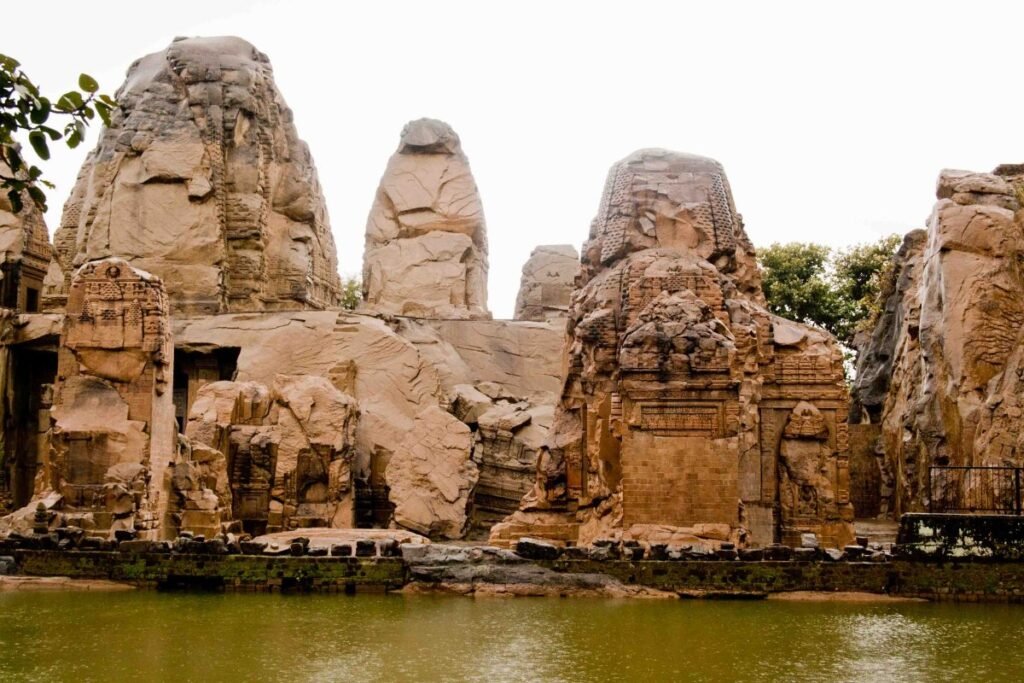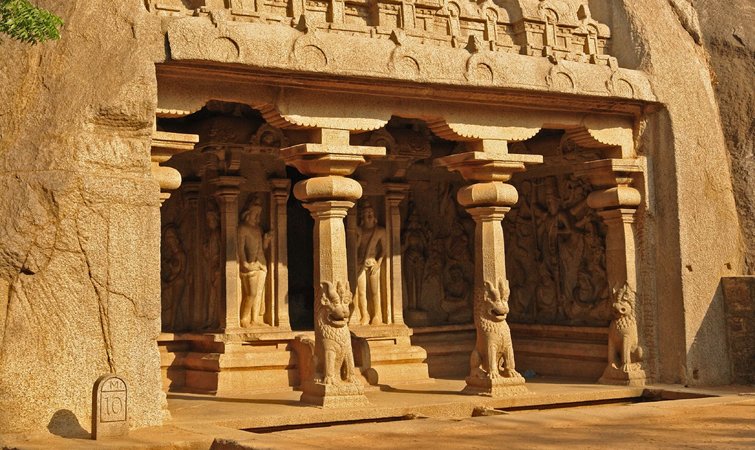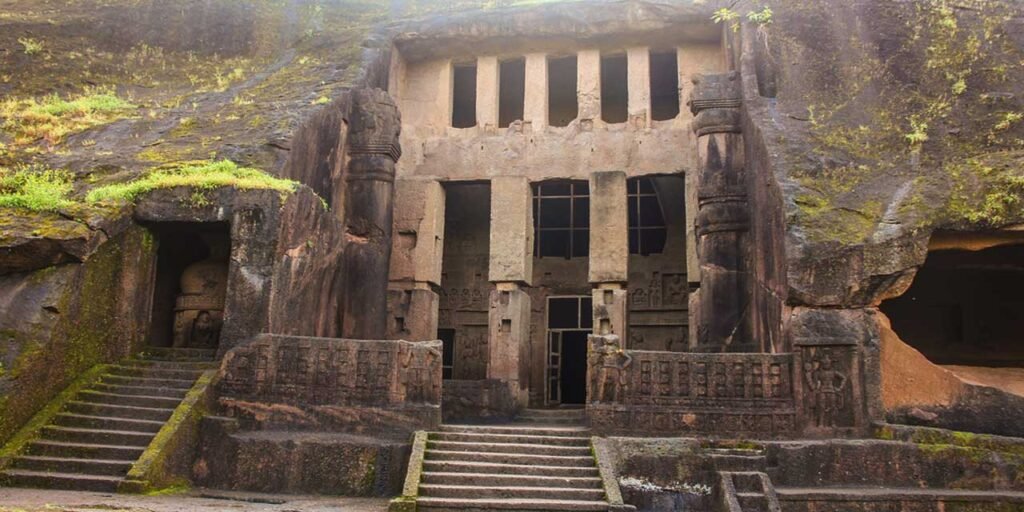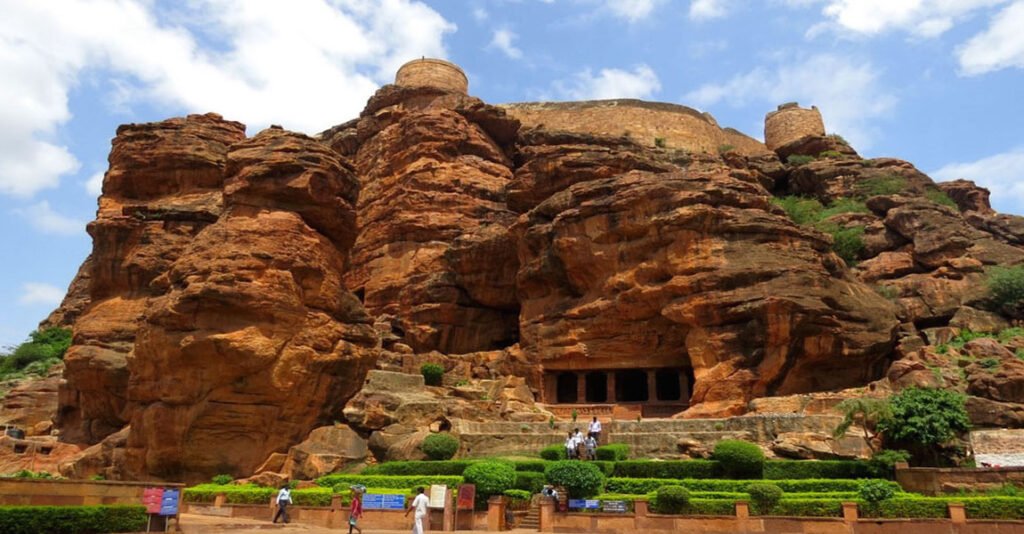In ancient India, temple architecture reached unparalleled heights across diverse regions. Influenced by geographical, climatic, ethnic, racial, historical, and linguistic differences, each area developed distinct styles of temple construction. Here are 10 of the Most Amazing carvings in Temples and Architectures of India
1. Masroor Cave Temples, Himachal Pradesh

The Masroor Rock Cut Temple, also known as the Himalayan Pyramid, is an extraordinary complex consisting of 15 monolithic rock-cut monuments. These structures are intricately carved in the traditional Indo-Aryan style, a distinctive feature unique to northern India. Adjacent to the temple complex lies the serene Masroor Lake, which beautifully mirrors the temple’s reflection in its tranquil waters.
2. Varaha Cave Temples, Tamil Nadu

Located in Mamallapuram, Tamil Nadu, the Varaha Cave Temples showcase stunning Pallava architecture from the 7th century. This temple stands as one of the finest examples of the ancient Vishwakarma Sthapathis’ craftsmanship. The most prominent statue in the cave temple is of Lord Vishnu, depicted as Varaha, the boar, lifting the earth from the sea. The temple also features carvings of many other mythological figures.
3. Kanheri Caves, Maharashtra

The Kanheri Caves comprise a series of rock-cut monuments and caves carved into a massive basalt outcrop within Sanjay Gandhi National Park. These caves showcase Buddhist sculptures, along with intricate relief carvings, paintings, and inscriptions that date from the 1st century BCE to the 10th century CE. The name “Kanheri” is derived from the Sanskrit term “Krishnagiri,” meaning Black Mountain.
4. Badami Cave Temples, Karnataka

The Badami Cave Temples, located in northern Karnataka, comprise a complex of four magnificent temples dating back to the 6th century. These temples are a remarkable example of Indian rock-cut architecture, specifically the Badami Chalukya style. Recognize as exemplary Hindu temples, they are situated on the west bank of an artificial lake.
5. Udayagiri Caves, Madhya Pradesh

Situated in Vidisha, Madhya Pradesh, the Udayagiri Caves are home to some of the oldest Hindu cave temples. This site is renown for its sculpture depicting Lord Vishnu’s incarnation as Varaha. The complex features 20 caves, with 19 dedicated to Hinduism and 1 to Jainism.
6. The Pancha Rathas, Mahabalipuram

The Pancha Rathas Monumental Complex, recognized as a UNESCO World Heritage Site, boasts a collection of temples, rathas, and other historic monuments. The complex is renown for its extraordinary rock-cut temple, the Pancha Rathas. This temple comprises five monolithic rock-cut structures, each carved from a single stone. These rathas are name after the Pandavas and Draupadi: Draupadi Ratha, Arjuna Ratha, Bhima Ratha, Nakula Sahadeva Ratha, and Dharmaraja Ratha.
7. Akshardham, Delhi

The temple is design following Maharishi Vastu Architecture standards and is constructed entirely from Rajasthani pink sandstone and Italian marble, without the use of metals like iron or copper. Towering at an impressive height of ten stories, the mandir features 234 intricately decorated pillars, nine domes, and over 20,000 statues of devotees and sadhus. Additionally, the temple houses 134 life-sized elephant statues. Dedicated to Swaminarayan, the temple enshrines an 11-foot murti of him in abhayamudra under the central dome. The mandir also contains murtis of Sita Ram, Radha Krishna, Shiv Parvati, and Lakshmi Narayan, each crafted from paanch dhaatu, or the five metals, in accordance with Hindu tradition.
8. Meenakshi Amman Temple, Madurai

Constructed in the Dravidian style, the temple spans a vast 14-acre area in the heart of Madurai. It is encircle by massive walls, which were erect in response to historical invasions. Viewed from above, the entire complex forms a mandala, a design based on principles of symmetry and loci. Within the temple, there are numerous shrines, including the two main ones dedicated to Sundareswarar and Meenakshi. Additional shrines honor various deities such as Ganesha and Murugan, and the temple is also home to goddesses Lakshmi, Rukmini, and Saraswati.
9. Somnath, Saurashtra

Situated on the Arabian Sea’s shore, this magnificent temple is believe to have been craft from sandalwood in the Chalukya architectural style by Gujarat’s skilled masons. The temple stands 15 meters tall with seven stories and features an additional 8.2-meter-high flagpole at its peak. The Somnath Temple, a testament to the expertise of the Sompuras, the premier masons of Gujarat, is designed so that no land is visible from its seashore location all the way to Antarctica.
10. Ramanathaswamy Temple, Rameshwar

Another remarkable example of Dravidian architecture, this temple features the largest hallway of all, with spires that reach towards the sky. It boasts a 4,000-foot-long pillared corridor containing over 4,000 pillars. With 21 gopurams (towers), the sheer size of the temple is awe-inspiring. Among its many magnificent structures, the “Hall of 1,000 Pillars” stands out as the main attraction. This hall is a stunning example of a meticulously planned theater-like structure. Opposite it lies the “Sesha Mandap,” renowned for its exquisite sculptures.
